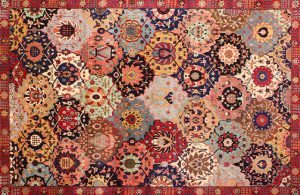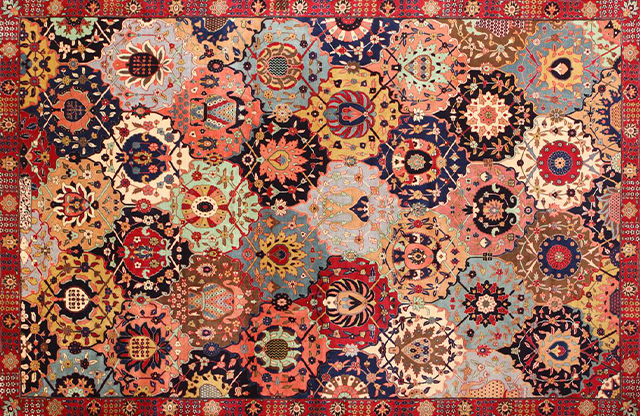Persian carpets are truly a work of art. The weaving technique, patterns, and vibrant colors of these handcrafted masterpieces have captured the hearts of people around the world for centuries. As someone who has always been fascinated by Persian culture and its exquisite craftsmanship, I find myself drawn to the intricacies of Persian carpet weaving.

Growing up, I remember our home being adorned with a beautiful Persian carpet that my grandparents had brought back from their travels. It became the centerpiece of our living room, a tangible expression of our heritage. As a child, I would often lie on the carpet, feeling the softness of the wool against my skin, and marveling at the intricate designs that seemed to come to life before my eyes.
What sets Persian carpets apart from other types of rugs is not only their visual appeal but also the craftsmanship that goes into creating them. Persian carpet weaving is an age-old tradition, passed down through generations, with techniques that have remained virtually unchanged for centuries. It is a labor-intensive process that requires patience, skill, and a deep understanding of the art form.
The art of Persian carpet weaving begins with selecting the finest wool or silk, as these materials are known for their durability and ability to hold vibrant colors. The wool is carefully sheared from the sheep, and then it goes through a meticulous washing and drying process to remove any impurities. The silk, on the other hand, is harvested from the silkworms and refined to create a luxurious and lustrous material.
Once the materials are prepared, the weaver sets up the loom, which is a frame that holds the vertical threads called the warp. The weaver then starts the intricate process of tying the knots that form the design of the carpet. This is done row by row, knot after knot, following a detailed pattern that has been handed down from generation to generation.
One of the remarkable aspects of Persian carpet weaving is the diverse range of patterns and designs that are woven into these rugs. Each region of Iran has its own unique style, influenced by its cultural heritage and the weaver’s personal creativity. From geometric motifs to intricate floral patterns, each design has a story to tell, reflecting the rich history of the Persian civilization.
The process of creating a Persian carpet can take anywhere from a few months to several years, depending on the size, complexity of the design, and the level of detail. It requires not only technical skill but also an artistic eye to ensure that every knot is perfectly tied, and the colors are harmoniously balanced.
One of the aspects that make Persian carpets so special is the natural dyes that are used to color the wool or silk. Unlike synthetic dyes, which fade over time, natural dyes have an exceptional longevity, allowing the vibrant colors of the carpets to endure for generations. These natural dyes are obtained from plants, minerals, or even insects, adding to the uniqueness and authenticity of each Persian carpet.
Owning a Persian carpet is like having a piece of history and culture in your home. It is a testament to the centuries of craftsmanship that have shaped Iran’s artistic identity. The value of a Persian carpet goes beyond its monetary worth; it is a tangible reminder of the artistry, skill, and dedication that have gone into creating each piece.
As I sit here on my own Persian carpet, running my fingers through the intricate patterns and feeling the softness of the wool, I am reminded of the incredible artistry and tradition that are woven into every fiber. Persian carpet weaving is a true labor of love, a reflection of a culture that cherishes its rich heritage and strives to preserve it through generations.











